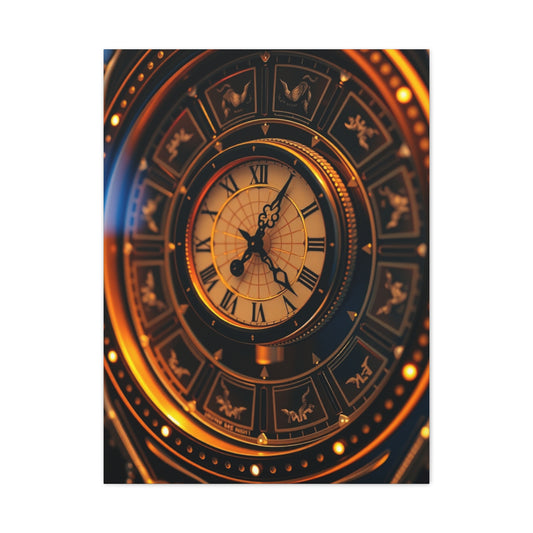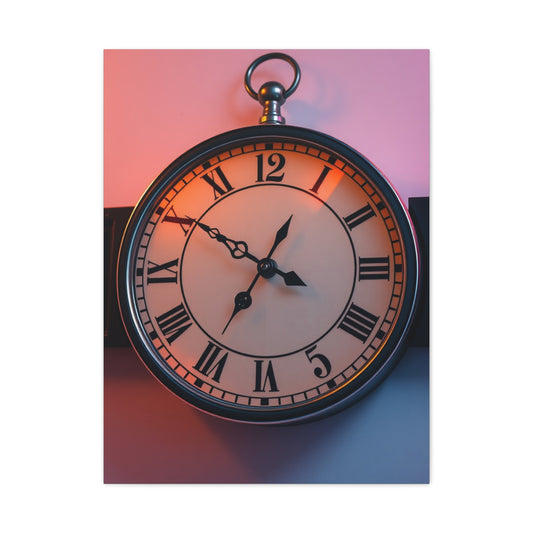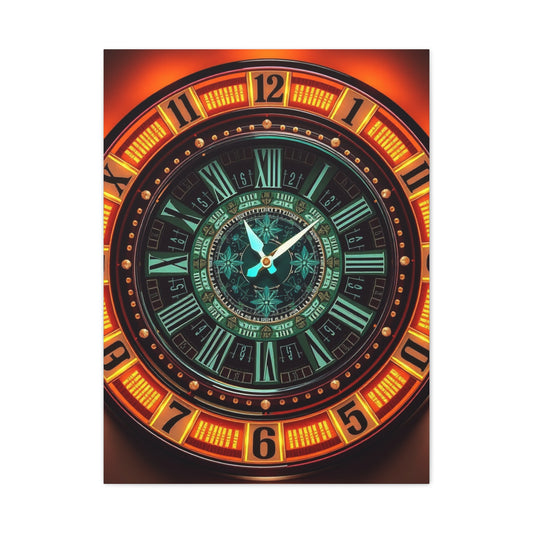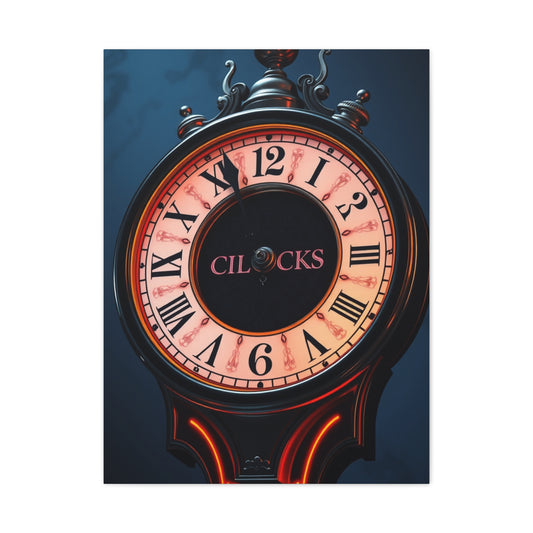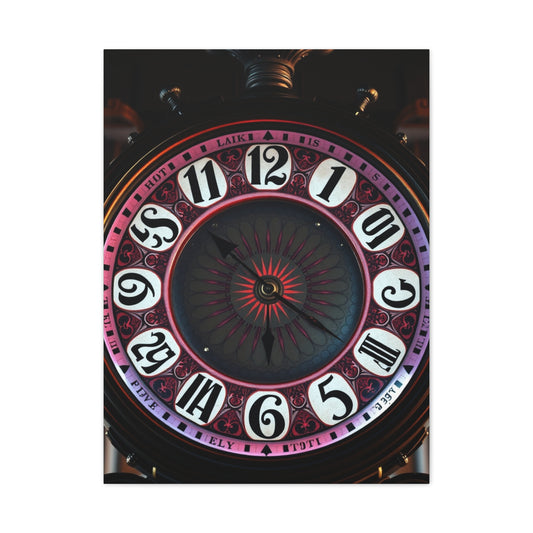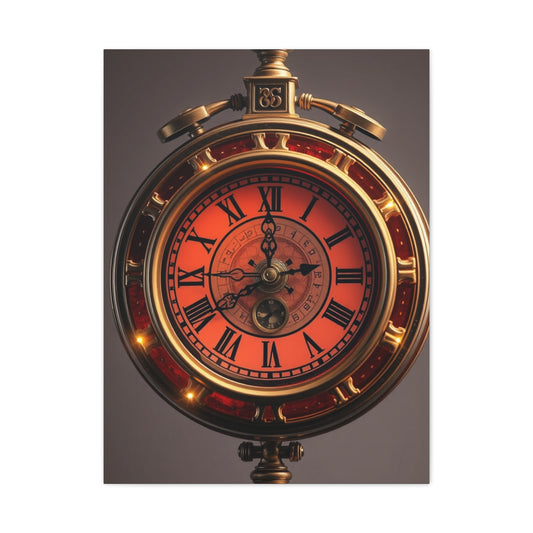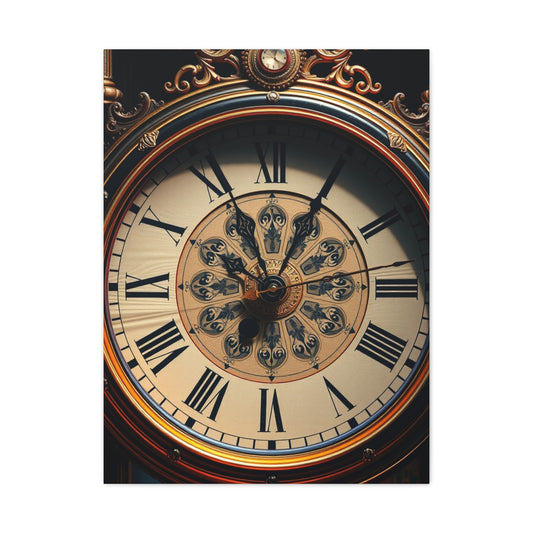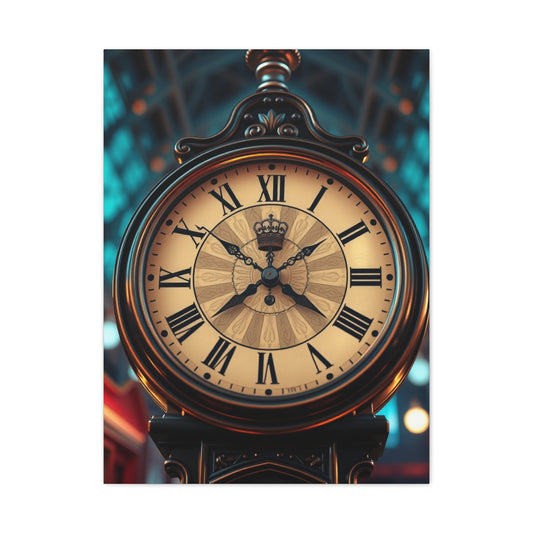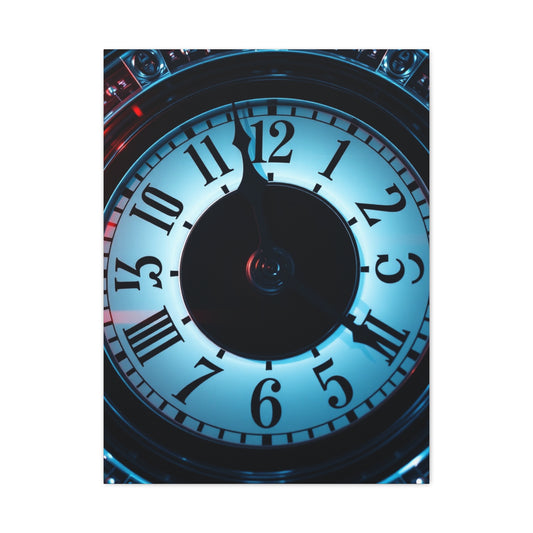Timepiece Artistry: Transform Your Living Space with Stunning Wall Art Clocks
In the realm of interior design, few elements possess the remarkable ability to blend functionality with aesthetic appeal quite like wall art clocks. These extraordinary timepieces transcend their primary purpose of telling time, evolving into captivating focal points that define the character and ambiance of your living space. The modern homeowner seeks pieces that not only serve practical needs but also contribute to the overall visual narrative of their dwelling.
The significance of selecting the perfect wall art clock extends far beyond mere timekeeping. These versatile pieces act as silent storytellers, reflecting personal taste, lifestyle preferences, and design sensibilities. Whether your living room embodies contemporary sophistication, rustic charm, or eclectic vibrancy, the right timepiece can harmoniously unite all elements while adding layers of visual interest and personality.
Contemporary living spaces demand more than simple functionality from their decorative elements. Homeowners increasingly seek pieces that demonstrate thoughtful curation and artistic merit. Wall art clocks fulfill this requirement magnificently, offering endless possibilities for creative expression while maintaining their essential practical purpose. The marriage of art and utility creates opportunities for unique design statements that resonate with both residents and guests.
Exploring the Diverse Universe of Timepiece Designs
Ornamental Masterpieces for Statement Walls
Ornamental wall clocks represent the pinnacle of decorative timekeeping, featuring elaborate designs that command attention and admiration. These magnificent pieces often incorporate intricate metalwork, detailed carvings, ornate patterns, and luxurious materials that transform simple time-telling devices into museum-worthy art pieces. The craftsmanship involved in creating these timepieces reflects centuries of horological artistry and design evolution.
The construction of ornamental clocks frequently involves multiple materials working in harmony. Rich hardwoods provide warmth and natural beauty, while polished metals add glamour and sophistication. Crystal accents catch and reflect light, creating dynamic visual effects throughout the day. Hand-painted details and decorative inlays contribute layers of complexity that reward closer inspection and appreciation.
These elaborate timepieces particularly complement homes featuring traditional, classical, or maximalist design approaches. Rooms adorned with rich fabrics, detailed moldings, antique furniture, and layered textures provide the perfect backdrop for ornamental clocks. The visual weight of these pieces requires careful consideration of placement and surrounding elements to achieve balanced composition.
Color palettes for ornamental clocks typically embrace rich, saturated tones that convey luxury and sophistication. Deep burgundies, forest greens, royal blues, and metallic finishes create striking visual impact while maintaining elegance. These colors work exceptionally well in formal living spaces where dramatic effect is desired.
Streamlined Elegance Through Minimal Design
The philosophy of minimalism has profoundly influenced contemporary clock design, resulting in timepieces that embody the principle that less is indeed more. Minimalist wall clocks strip away unnecessary ornamentation, focusing instead on clean lines, geometric precision, and functional beauty. These pieces celebrate simplicity while maintaining visual sophistication and timeless appeal.
Materials selection for minimalist timepieces emphasizes quality over quantity. Premium woods with natural finishes showcase inherent beauty without artificial enhancement. Brushed metals provide subtle texture while maintaining understated elegance. High-quality plastics and composites offer durability and clean aesthetics at accessible price points.
The color spectrum for minimalist clocks tends toward neutral territories, embracing whites, grays, blacks, and natural wood tones. These subdued palettes ensure versatility and longevity, allowing the timepieces to adapt as surrounding decor evolves. Occasional accent colors appear in carefully measured doses, providing just enough interest without overwhelming the minimalist aesthetic.
Placement of minimalist clocks requires strategic consideration of negative space and visual balance. These pieces thrive in environments where they can breathe, surrounded by clean walls and uncluttered surfaces. The absence of competing visual elements allows the clock's refined design to shine and fulfill its role as a subtle yet significant design element.
Historical Charm Through Vintage Timepieces
Vintage-inspired wall clocks transport viewers to bygone eras, evoking nostalgia and romantic notions of craftsmanship from previous generations. These timepieces draw inspiration from specific historical periods, incorporating design elements that reflect the aesthetic sensibilities and cultural values of their chosen era. The appeal lies in their ability to create temporal bridges between past and present.
Victorian-era influences appear in clocks featuring elaborate scrollwork, floral motifs, and rich mahogany or walnut finishes. Art Deco inspirations manifest through geometric patterns, bold contrasts, and streamlined forms that celebrate the glamour of the 1920s and 1930s. Mid-century modern influences embrace clean lines, atomic-age graphics, and innovative materials that defined post-war optimism.
Authenticity in vintage-inspired design requires attention to period-appropriate details. Typefaces, color schemes, material choices, and proportional relationships must align with historical precedents to achieve convincing results. Skilled artisans study original pieces to understand the nuances that distinguish authentic vintage design from superficial imitation.
The patina and aging effects often incorporated into vintage clocks add layers of visual interest and perceived history. Distressed finishes, antiqued metals, and weathered wood surfaces suggest the passage of time and accumulated stories. These details contribute to the romantic appeal of vintage pieces while providing contemporary homes with character and depth.
Nature-Inspired Artistic Expression
The natural world provides endless inspiration for clock designers seeking to create pieces that celebrate organic beauty and environmental harmony. Nature-inspired timepieces incorporate elements from flora, fauna, landscapes, and natural phenomena, transforming functional objects into celebrations of the world around us. These designs resonate with homeowners seeking to maintain connections with nature within their living spaces.
Botanical themes appear frequently in nature-inspired clocks, featuring delicate leaf patterns, flowering branches, tree silhouettes, and garden scenes. These designs bring the tranquility and beauty of gardens indoors, creating peaceful focal points that promote relaxation and well-being. Seasonal variations allow homeowners to celebrate the changing natural cycles throughout the year.
Wildlife motifs add personality and whimsy to timepieces, featuring everything from graceful birds in flight to majestic forest creatures. These designs often incorporate symbolic meanings associated with specific animals, allowing homeowners to express personal values and aspirations through their decor choices. The movement of clock hands can interact with animal figures to create dynamic visual stories.
Landscape-inspired clocks capture the grandeur of natural vistas, from mountain ranges to ocean scenes to desert sunsets. These pieces often feature layered compositions that create depth and visual interest while maintaining readability. The use of varied materials and textures helps recreate the tactile qualities of natural environments.
Weather phenomena provide another rich source of inspiration, with clocks featuring sun rays, cloud formations, lightning patterns, and water droplets. These dynamic designs can change appearance throughout the day as lighting conditions shift, creating ever-evolving artistic displays that maintain visual interest over time.
Contemporary Abstract Artistic Statements
Abstract clock designs push the boundaries of traditional timekeeping aesthetics, embracing experimental forms, unconventional materials, and innovative concepts that challenge perceptions of what a clock should be. These avant-garde pieces function as conversation starters and artistic statements while fulfilling their practical purpose with creativity and flair.
Geometric abstraction appears in clocks featuring overlapping circles, intersecting lines, fragmented shapes, and mathematical relationships. These designs often play with concepts of time, space, and movement, creating visual metaphors for the passage of time itself. The interaction between clock hands and abstract forms generates ever-changing compositions that evolve throughout the day.
Color field abstractions utilize large areas of pure color to create emotional and psychological impact. These designs often feature gradual transitions, subtle variations, and harmonic relationships that create mood and atmosphere. The selection of colors can dramatically influence the perceived temperature, energy level, and emotional tone of a living space.
Sculptural abstract clocks extend beyond flat wall surfaces, incorporating three-dimensional elements that create shadows, depth, and spatial relationships. These pieces often blur the lines between timepieces and wall sculptures, challenging viewers to consider the intersection of art and functionality. The play of light and shadow adds temporal elements that complement the clock's time-telling function.
Mixed media approaches combine traditional clockmaking materials with unexpected elements such as recycled objects, industrial components, natural specimens, and technological components. These eclectic combinations create unique pieces that reflect contemporary values around sustainability, innovation, and creative reuse.
Strategic Selection Considerations for Perfect Placement
Optimal Positioning for Maximum Impact
The placement of wall art clocks requires careful consideration of both practical and aesthetic factors to achieve optimal results. Visibility remains the primary functional concern, ensuring that the timepiece can be easily read from various positions within the room. However, aesthetic considerations such as visual balance, proportional relationships, and sight lines play equally important roles in successful placement.
Eye-level positioning typically provides the most comfortable viewing experience, with the clock's center positioned approximately 60 inches from the floor. This height accommodates most adults while remaining accessible to children and seated individuals. Adjustments may be necessary based on ceiling height, furniture arrangements, and specific room configurations.
Lighting conditions significantly impact both the visibility and aesthetic appeal of wall clocks. Natural light sources can create beautiful highlighting effects while potentially causing glare or readability issues at certain times of day. Artificial lighting should be positioned to illuminate the clock face without creating harsh shadows or reflections that impede visibility.
The relationship between the clock and surrounding wall space influences the overall visual impact. Adequate breathing room around the timepiece prevents crowded appearances while allowing the design to make its intended statement. Oversized clocks may require proportionally larger wall areas to achieve balanced compositions.
Furniture arrangements below or adjacent to wall clocks create important compositional relationships. The clock should complement rather than compete with nearby elements, working together to create harmonious groupings that enhance the overall room design. Consider how the clock will appear from various seating positions and traffic patterns within the room.
Color Harmony and Visual Coordination
Color selection for wall art clocks involves complex considerations that extend beyond personal preference to encompass psychological effects, spatial perception, and design cohesion. The chosen colors should support the overall design intent while creating appropriate mood and atmosphere for the intended space usage.
Monochromatic color schemes utilize various shades and tints of a single color family, creating sophisticated and harmonious effects. These approaches work particularly well in minimalist or contemporary settings where subtle variation provides interest without visual disruption. The interplay of light and dark values within the chosen color family adds depth and complexity.
Complementary color combinations pair opposing colors from the color wheel to create vibrant and dynamic effects. These high-contrast relationships generate visual excitement and energy, making them suitable for spaces where stimulation and activity are desired. Care must be taken to balance the intensity of complementary colors to avoid overwhelming the viewer.
Analogous color harmonies utilize neighboring colors on the color wheel to create gentle transitions and natural flow. These combinations often reflect color relationships found in nature, promoting feelings of comfort and harmony. The subtle variations provide visual interest while maintaining peaceful and relaxing atmospheres.
Neutral color palettes offer versatility and longevity, allowing timepieces to adapt as surrounding decor evolves. The sophistication of well-executed neutral schemes should not be underestimated, as they provide elegant backdrops that highlight texture, form, and proportion. Careful attention to undertones prevents neutral schemes from appearing bland or boring.
Seasonal color considerations allow homeowners to create timepieces that celebrate the changing calendar and maintain year-round relevance. Spring palettes might emphasize fresh greens and soft pastels, while autumn schemes could feature warm oranges and rich browns. This approach ensures that the clock remains visually connected to the natural rhythms of the year.
Textural Relationships and Surface Interactions
The wall surface behind a clock creates important textural relationships that influence the overall visual effect. Smooth painted walls provide clean backdrops that highlight the clock's design details, while textured surfaces add complexity and depth to the composition. Understanding these interactions helps create more sophisticated and visually interesting installations.
Brick walls offer rustic charm and visual weight that complements vintage or industrial-style timepieces. The natural color variations and mortar patterns create rich backgrounds that enhance the character of appropriately chosen clocks. The thermal mass of brick walls also provides stable mounting surfaces for heavier timepieces.
Wood paneling creates warm and natural backdrops that work particularly well with organic or traditional clock designs. The grain patterns and natural color variations add visual interest while maintaining sophisticated appearances. Different wood species and finishes offer varying degrees of contrast and coordination opportunities.
Wallpaper and decorative wall coverings provide opportunities for creative coordination or deliberate contrast. Subtle patterns can complement clock designs without competing for attention, while bold patterns might require carefully considered clock selections to avoid visual chaos. The scale of wallpaper patterns should relate appropriately to the size and design of the chosen timepiece.
Painted accent walls create dramatic backdrops that can make timepieces appear to float or stand out dramatically. The color selection for accent walls should consider the clock's colors and overall room palette to ensure harmonious relationships. Dark accent walls can make light-colored clocks appear more prominent, while light backgrounds help dark timepieces stand out clearly.
Creating Curated Wall Arrangements
Single timepieces can serve as standalone focal points, but creative homeowners often develop curated wall arrangements that incorporate multiple elements working together to create more complex and interesting displays. These arrangements require careful planning and consideration of scale, proportion, balance, and visual flow to achieve successful results.
Gallery wall approaches incorporate timepieces as elements within larger collections of artwork, photographs, mirrors, and decorative objects. The clock becomes part of a larger visual story while maintaining its functional purpose. Successful gallery walls require careful consideration of spacing, alignment, and visual weight distribution to avoid chaotic appearances.
Symmetrical arrangements create formal and orderly effects through balanced placement of elements on either side of a central axis. These approaches work well in traditional or formal settings where order and predictability are valued. The timepiece might serve as the central element or as part of a balanced grouping.
Asymmetrical arrangements embrace more dynamic and casual relationships between elements, creating visual interest through intentional imbalance and varied positioning. These approaches suit contemporary and eclectic settings where creativity and personality are emphasized over formal order. The key lies in achieving visual balance despite asymmetrical positioning.
Layered arrangements incorporate elements at different depths from the wall surface, creating three-dimensional compositions that add spatial interest. Floating shelves, wall-mounted ledges, and varied mounting depths contribute to these layered effects. The timepiece might be positioned in front of or behind other elements to create compelling spatial relationships.
Thematic arrangements group elements that share common subjects, styles, or concepts to create cohesive visual narratives. A nature-themed arrangement might combine botanical prints, natural materials, and organic-shaped timepieces to create unified statements about the homeowner's connection to the natural world.
Bold Design Statements and Dramatic Impact
Oversized Timepieces as Architectural Elements
Large-scale wall clocks transcend traditional notions of timepieces, functioning more as architectural elements that define and organize living spaces. These statement pieces command attention and establish focal points that influence furniture arrangement, traffic patterns, and overall room dynamics. The commitment to oversized timepieces requires confidence and careful planning to achieve successful integration.
The impact of oversized clocks extends beyond their physical dimensions to encompass psychological and spatial effects. Large timepieces can make rooms feel more expansive by creating strong visual anchors that organize surrounding elements. Conversely, they might make smaller rooms feel more intimate by establishing clear boundaries and defined spaces.
Material selection for oversized timepieces requires special consideration of weight, durability, and visual presence. Heavy materials like solid wood or metal demand robust mounting systems and structural considerations. Lighter materials such as engineered composites or specialized plastics can achieve similar visual impact while reducing installation complexity.
The relationship between oversized clocks and room scale requires careful evaluation to ensure appropriate proportions. Rooms with high ceilings and generous dimensions can accommodate truly massive timepieces, while more modest spaces might benefit from large clocks that respect existing proportional relationships. The goal is dramatic impact without overwhelming the space.
Lighting considerations become more complex with oversized timepieces due to their increased surface area and potential for casting significant shadows. Multiple light sources may be necessary to ensure even illumination and prevent dark areas that impede readability. The interplay of light and shadow can enhance the three-dimensional qualities of large clocks.
Multi-Clock Installations and Time Zone Displays
Creative homeowners increasingly embrace multi-clock installations that transform single timepieces into complex artistic statements. These arrangements might display multiple time zones for international connections, create rhythmic patterns through repetition, or explore concepts of time and temporality through varied clock designs and settings.
Time zone displays serve practical purposes for internationally connected households while creating sophisticated design statements. Business professionals, frequent travelers, and globally connected families benefit from easy access to multiple time references. The visual impact of synchronized yet varied timepieces adds dynamic interest to living spaces.
Rhythmic repetition of identical or similar clocks creates powerful visual effects through pattern and variation. The synchronized movement of multiple clock hands generates hypnotic displays that celebrate the mechanical poetry of timekeeping. Different sizes, heights, or spacings add complexity to these rhythmic arrangements.
Conceptual explorations of time might incorporate clocks set to different times, stopped clocks, or clocks running at different speeds to create artistic statements about temporal perception and experience. These avant-garde approaches blur the lines between functional timepieces and conceptual art installations.
Historical timeline displays use multiple clocks to represent different historical periods or significant moments, creating educational and decorative installations that tell stories about the passage of time. These arrangements might incorporate period-appropriate clock styles or use consistent designs with varied settings to mark important dates.
Material Excellence and Craftsmanship Quality
Premium Wood Construction and Finishing
Wood remains one of the most beloved materials for wall clock construction due to its natural beauty, workability, and ability to complement diverse design styles. Different wood species offer varying characteristics in terms of grain pattern, color, hardness, and stability, allowing craftsmen to select materials that best serve specific design intentions.
Hardwood species such as oak, maple, cherry, and walnut provide durability and distinctive grain patterns that enhance visual appeal. These premium materials age gracefully, developing richer colors and deeper character over time. The investment in quality hardwoods ensures longevity and maintains aesthetic appeal for generations.
Softwood options including pine, cedar, and fir offer different aesthetic qualities and often come at more accessible price points. These materials work well for painted finishes, rustic designs, and casual living spaces. Proper finishing techniques ensure that softwoods provide adequate durability for timepiece applications.
Exotic wood species bring unique colors, patterns, and characteristics that create distinctive timepieces. Species such as zebrawood, purpleheart, padauk, and ebony offer striking visual effects that make bold design statements. The rarity and cost of exotic woods make them suitable for special applications where uniqueness is valued.
Reclaimed and salvaged wood materials contribute environmental benefits while adding character and history to timepieces. Barn wood, ship timber, industrial flooring, and architectural salvage provide unique characteristics that cannot be replicated in new materials. Each piece of reclaimed wood tells its own story through marks, stains, and wear patterns.
Finishing techniques significantly impact both appearance and durability of wooden timepieces. Natural oil finishes enhance wood grain while providing protection against moisture and wear. Polyurethane coatings offer superior durability for high-use applications. Wax finishes provide traditional appearance with renewable protection. Paint finishes allow for unlimited color options while protecting underlying wood.
Metal Artistry and Fabrication Techniques
Metal components in wall clocks range from structural frameworks to decorative accents, each requiring specific fabrication techniques and finishing approaches. The choice of metal type influences both aesthetic appearance and practical performance, with options spanning from affordable steel to premium precious metals.
Steel provides strength and affordability for clock mechanisms, frames, and structural components. Various steel alloys offer different characteristics in terms of corrosion resistance, workability, and magnetic properties. Surface treatments such as powder coating, galvanizing, and painting protect steel components while providing color and texture options.
Aluminum offers lightweight strength and excellent corrosion resistance, making it ideal for large timepieces where weight considerations are important. The material's workability allows for complex forming, cutting, and joining operations. Anodizing treatments provide durable color finishes while enhancing corrosion resistance.
Brass brings warm golden tones and traditional associations that work particularly well in vintage and classical designs. The material's workability and corrosion resistance make it suitable for both structural and decorative applications. Patina treatments can enhance the aged appearance that many homeowners desire.
Copper provides distinctive reddish tones and excellent working properties that appeal to craftsmen and designers. The material's tendency to develop natural patina over time adds character and prevents static appearances. Various chemical treatments can accelerate or control patina development.
Stainless steel combines durability with modern aesthetic appeal, offering bright finishes that complement contemporary design styles. The material's corrosion resistance ensures longevity in challenging environments. Various surface treatments including brushing, polishing, and etching provide texture and visual interest options.
Fabrication techniques for metal clock components include cutting, forming, welding, machining, and finishing operations. Laser cutting provides precise shapes with clean edges. Water jet cutting handles thick materials and complex geometries. CNC machining creates precise mechanical components. Welding joins separate pieces into unified structures. Hand forming adds artisanal character that mass production cannot replicate.
Glass and Crystal Integration
Glass elements in wall clocks serve both functional and decorative purposes, from protective covers over clock faces to decorative accents that catch and reflect light. The transparency and reflective qualities of glass create unique design opportunities while requiring specialized handling and mounting considerations.
Clear glass provides protection for clock mechanisms while maintaining visibility and readability. Tempered safety glass offers enhanced strength and safety characteristics essential for wall-mounted applications. Anti-reflective coatings reduce glare problems that can interfere with time reading. UV-filtering treatments protect internal components from sun damage.
Colored glass adds decorative elements that complement overall design schemes while providing functional benefits. Tinted glass can reduce glare while adding subtle color effects. Stained glass techniques create artistic elements that transform timepieces into illuminated artworks. Fused glass processes allow for complex color patterns and textures.
Textured glass surfaces provide visual interest while diffusing light in attractive ways. Frosted treatments create soft, even illumination effects. Patterned glass adds decorative elements without compromising transparency. Beveled edges create prismatic effects that add sparkle and movement to clock designs.
Crystal components bring luxury and elegance to upscale timepiece designs. Lead crystal offers superior optical clarity and brilliant light refraction. Cut crystal patterns create complex light displays that change throughout the day. Crystal pendulums add movement and sparkle to traditional clock designs.
Mirror integration creates spatial effects and light multiplication that enhance room brightness and apparent size. Silvered mirror provides traditional reflective properties. Antique mirror treatments add aged character and subtle distortion effects. Colored mirrors contribute tinted reflections that complement specific color schemes.
Installation considerations for glass and crystal elements require careful attention to mounting methods, thermal expansion, and safety factors. Proper gaskets and cushioning prevent stress concentrations that could cause cracking. Thermal isolation prevents expansion problems. Safety backing films contain glass fragments in case of breakage.
Color Impact
Warm colors in clock designs create inviting and energetic atmospheres that promote social interaction and comfort. These color families, including reds, oranges, yellows, and warm browns, psychologically suggest warmth, energy, and emotional connection. Understanding the psychological effects of warm colors helps homeowners select timepieces that support their desired living environment.
Red represents passion, energy, and strength, making it suitable for spaces where stimulation and activity are desired. Deep burgundies and wine tones provide sophisticated warmth without overwhelming intensity. Bright reds create dramatic focal points that command attention and energize surrounding spaces. Rose and coral tones offer gentler warmth that maintains approachability.
Orange combines the energy of red with the cheerfulness of yellow, creating optimistic and friendly impressions. Burnt orange and terracotta tones provide earthy warmth that complements natural materials. Bright oranges add playful energy suitable for casual living areas. Peach and apricot shades offer subtle warmth with sophisticated appeal.
Yellow represents joy, intellect, and creativity, bringing sunshine and optimism to living spaces. Golden yellows provide rich warmth that suggests luxury and comfort. Bright yellows create cheerful and energetic environments. Pale yellows offer subtle warmth without overwhelming delicate color schemes. Mustard and ochre tones add sophisticated earthiness.
Warm browns represent stability, reliability, and connection to nature. Rich chocolate browns provide sophisticated warmth that complements many design styles. Medium browns offer versatility and easy coordination with other colors. Light browns and tans provide neutral warmth that supports rather than dominates color schemes.
Cool Color Schemes and Calming Effects
Cool colors create calming and serene atmospheres that promote relaxation and contemplation. Blues, greens, purples, and cool grays psychologically suggest coolness, tranquility, and emotional balance. These colors work particularly well in spaces where rest and peace are priorities.
Blue represents trust, stability, and tranquility, making it ideal for relaxation areas and bedrooms. Navy blues provide sophisticated depth and timeless appeal. Sky blues create fresh and airy impressions that suggest openness and freedom. Teal combines blue's tranquility with green's natural harmony. Powder blues offer gentle serenity without coldness.
Green represents nature, harmony, and renewal, bringing outdoor tranquility into interior spaces. Forest greens provide rich depth and sophisticated natural appeal. Sage greens offer subtle color with calming properties. Mint greens create fresh and clean impressions. Olive greens provide earthy sophistication that bridges warm and cool palettes.
Purple represents luxury, creativity, and spirituality, offering sophisticated color options for discerning homeowners. Deep purples provide dramatic elegance and royal associations. Lavender creates gentle sophistication with calming properties. Mauve offers subtle color that coordinates well with both warm and cool palettes.
Cool grays provide sophisticated neutrality with subtle color temperature that supports calm environments. Charcoal grays offer dramatic depth without harshness. Medium grays provide versatile neutrality that coordinates with any accent color. Light grays create airy sophistication that enhances spatial perception.
Neutral Sophistication and Timeless Appeal
Neutral color palettes offer versatility, longevity, and sophisticated appeal that transcends temporary style trends. These colors provide stable foundations that allow other design elements to shine while maintaining harmony and balance. Understanding the subtle differences between neutrals helps create refined and cohesive design schemes.
White represents purity, simplicity, and spaciousness, making spaces appear larger and brighter. Pure whites provide clean and contemporary appeal. Warm whites with yellow or pink undertones create inviting and comfortable impressions. Cool whites with blue or gray undertones suggest modern sophistication. Off-whites provide subtle warmth without starkness.
Black represents elegance, sophistication, and dramatic contrast, serving as an ultimate neutral that coordinates with any color. Matte blacks provide contemporary sophistication without glare. Glossy blacks create formal elegance with reflective properties. Charcoal blacks offer subtle softening while maintaining dramatic impact.
Beiges and taupes provide warm neutrality that suggests comfort and reliability. These colors work particularly well with natural materials and earth-tone palettes. Greige combinations blend gray and beige characteristics to create contemporary neutrality with warmth. Mushroom tones offer sophisticated earthiness.
Natural wood tones provide organic neutrality that brings warmth and texture to design schemes. Light woods such as maple and birch create bright and airy impressions. Medium woods like oak and cherry provide rich warmth and classic appeal. Dark woods including walnut and ebony create dramatic sophistication.
The key to successful neutral schemes lies in layering different values, textures, and subtle color variations to create depth and interest. Monotonous neutral schemes lack visual engagement, while well-composed neutral palettes provide sophisticated backgrounds that highlight artwork, furniture, and architectural features.
Size Considerations and Proportional Relationships
Small Clock Placement and Intimate Spaces
Small wall clocks serve important functional and aesthetic roles in intimate spaces where larger timepieces might overwhelm the scale and proportion of the environment. These delicate timepieces require careful consideration of placement, visibility, and relationship to surrounding elements to achieve optimal impact within their modest dimensions.
The charm of small clocks lies in their ability to provide timekeeping functions without dominating visual compositions. These pieces work particularly well in bedrooms, powder rooms, home offices, and cozy reading nooks where intimate scale enhances rather than diminishes their presence. The key lies in strategic placement that ensures visibility while maintaining proportional harmony.
Grouping strategies for small clocks create more significant visual impact through repetition and variation. Multiple small timepieces arranged in geometric patterns, organic clusters, or linear progressions generate collective presence that individual pieces cannot achieve alone. These arrangements require careful consideration of spacing, alignment, and visual flow to avoid cluttered appearances.
Reading distance considerations become critical with small timepieces, as reduced size may impact legibility from normal viewing positions. Strategic placement at closer viewing distances ensures functionality while taking advantage of intimate positioning opportunities. Bedside tables, desk areas, and seating groupings provide appropriate viewing distances for small clocks.
Detail appreciation opportunities arise with small clocks that might be overlooked in larger pieces. Intricate mechanisms, delicate materials, precious metals, and fine craftsmanship receive proper attention when viewed at close range. These timepieces often reward careful examination with surprising complexity and artisanal quality.
Lighting considerations for small clocks require attention to detail illumination and glare prevention. Task lighting can enhance visibility and showcase fine details, while ambient lighting prevents strain and maintains comfortable viewing conditions. The interplay of light and shadow can dramatically enhance the three-dimensional qualities of small timepieces.
Medium Clock Versatility and Balanced Presence
Medium-sized wall clocks represent the sweet spot of timepiece design, offering sufficient presence to serve as decorative focal points while maintaining versatility for various room sizes and design contexts. These timepieces typically measure between 12 and 24 inches in diameter, providing optimal visibility without overwhelming modest spaces or disappearing in larger rooms.
The versatility of medium clocks makes them suitable for virtually any room in the home, from kitchens and dining rooms to bedrooms and home offices. This size range accommodates most standard wall spaces while providing adequate presence to anchor furniture groupings and coordinate with artwork and decorative accessories.
Proportional relationships with furniture become more forgiving with medium-sized timepieces, as they coordinate well with most standard furniture scales. Sofas, dining tables, headboards, and bookcases provide appropriate visual partners for medium clocks without requiring special consideration or adjustment of surrounding elements.
Design complexity opportunities expand with medium timepieces, as increased surface area accommodates more detailed artwork, complex mechanisms, and elaborate decorative elements. Designers can incorporate richer color palettes, more intricate patterns, and sophisticated material combinations that might be lost or overwhelming in smaller or larger formats.
Installation flexibility increases with medium clocks, as their moderate weight and size accommodate most standard wall mounting systems without requiring special structural considerations. Standard wall studs provide adequate support, and positioning options remain flexible without concerns about overwhelming or underwhelming the chosen location.
Visual impact balance allows medium timepieces to serve as either primary focal points or supporting elements within larger design compositions. Their scale provides sufficient presence to anchor visual arrangements while remaining compatible with gallery walls, artwork groupings, and mixed-media displays.
Large Clock Drama and Architectural Integration
Large wall clocks transcend traditional timepiece boundaries to function as architectural elements that define and organize living spaces. These statement pieces typically exceed 24 inches in diameter and require careful consideration of structural support, proportional relationships, and overall design integration to achieve successful results.
The dramatic impact of large timepieces creates instant focal points that establish hierarchy and organization within room compositions. These commanding pieces influence furniture arrangement, traffic patterns, and spatial perception while providing unmistakable design statements that reflect homeowner personality and style preferences.
Structural considerations become paramount with large clocks due to increased weight and wind resistance. Proper mounting requires location of wall studs, use of appropriate hardware, and consideration of wall construction materials. Heavy timepieces may require specialized mounting systems or structural reinforcement to ensure safe and secure installation.
Proportional evaluation requires careful assessment of room scale, ceiling height, and surrounding elements to ensure appropriate relationships. Rooms with generous proportions and high ceilings can accommodate truly massive timepieces, while more modest spaces require careful scaling to maintain balance and harmony.
Design complexity opportunities expand dramatically with large timepieces, as increased surface area accommodates elaborate artwork, complex mechanisms, and sophisticated material combinations. These pieces often blur the lines between clocks and wall sculptures, creating artistic statements that serve dual functions as timepieces and art installations.
Lighting integration becomes more complex with large clocks due to their increased surface area and potential for creating significant shadows. Multiple light sources may be necessary to ensure even illumination and prevent dark areas that impede readability. The interplay of light and shadow can enhance the three-dimensional qualities and artistic impact of large timepieces.
Conclusion:
Wall art clocks represent one of the most successful marriages of practicality and beauty within interior design. Far from being mere instruments of timekeeping, these remarkable objects serve as cultural artifacts, aesthetic statements, and reflections of personal identity. Whether expressed through the ornate craftsmanship of traditional designs, the serene clarity of minimalism, the evocative charm of vintage inspirations, or the bold creativity of abstract experimentation, wall clocks elevate ordinary walls into dynamic canvases that speak to the rhythms of daily life.
The enduring appeal of wall art clocks lies in their ability to occupy multiple roles at once. They are functional tools, ensuring the flow of daily routines; decorative anchors, shaping the visual balance of a room; and expressive artworks, communicating values, memories, and stylistic choices. This versatility makes them uniquely adaptable across contexts—fitting seamlessly into grand formal settings, cozy personal spaces, or cutting-edge modern interiors. Each timepiece carries its own narrative, whether rooted in centuries-old craftsmanship or born of contemporary innovation.
Equally significant is the power of wall clocks to create atmosphere. A gilded ornamental piece brings drama and opulence; a minimalist clock radiates calm and order; a vintage design connects viewers to the passage of history; while nature-inspired or abstract models invite contemplation and conversation. Their placement, size, materiality, and color all contribute to emotional resonance, transforming not only how a space looks but also how it feels to inhabit. In this sense, a wall clock does more than measure minutes and hours—it measures ambiance.
Today’s homeowners and designers increasingly appreciate this dual role of clocks as both functional and emotional investments. In a world dominated by digital devices, the presence of an analog wall clock introduces a tactile, grounding quality. It slows perception, reminding us of the cyclical nature of time rather than its relentless progression. The subtle motion of clock hands across a thoughtfully designed face becomes a daily meditation, a quiet rhythm within the visual symphony of a room.
Moreover, the materials and craftsmanship of wall art clocks ensure that they remain more than transient décor. Premium woods, metals, glass, and artisanal finishes guarantee longevity, while their timeless design language transcends fleeting trends. Whether bold or understated, these pieces often become heirlooms—objects that outlast furniture cycles and continue to grace walls for generations.
Ultimately, the true artistry of wall clocks lies in their capacity to harmonize opposites: function and beauty, tradition and innovation, permanence and motion. They are, quite literally, art in motion—living sculptures that remind us of time’s presence while celebrating the human impulse to shape it into something meaningful and beautiful.
By carefully selecting the right wall art clock—considering size, color, materials, and placement—you transform more than a wall: you transform the very character of your living space. In doing so, you claim time not as something that slips away unnoticed, but as something honored, measured, and adorned with artistry.

